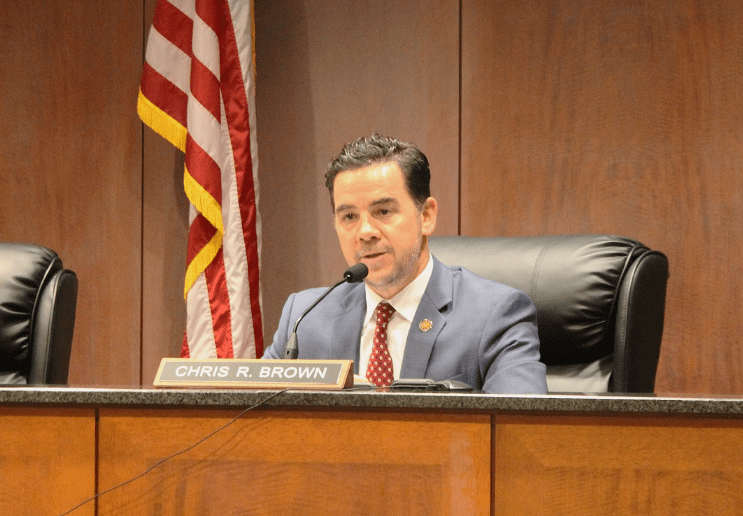From the MS Truth Journal:
BUSTING THE MYTH OF SLUGGISH, FLAGGING REVENUES
MS Truth Journal, April 17, 2017
Here at MS Truth Journal, our goal is to shine the light of truth. We offer factual information, not opinion, and we trust Mississippians to review the facts and make their own decisions about what those facts mean. Since the adoption of the State budget at the end of the 2017 legislative session, and even before the session began, many articles have been written lamenting the State’s “sluggish revenues,” with the stated reason by many journalists as tax cuts passed by the Legislature in recent years. For example, way back in October the Daily Journal reported “State revenue remains sluggish.” http://djournal.com/news/state-revenue-remains-sluggish/ The sluggish narrative has continued in the press until now. One recent example picked up nationally by U.S. News and World Report was this March 25, 2017 Associated Press article https://www.usnews.com/…/mississippi-lawmakers-face-lower-r… . One paragraph in the article boldly asserted:
Mississippi is struggling with flagging revenue, a result of a slow economy and hundreds of millions in tax cuts that the GOP-led Legislature has passed since 2012. Gov. Phil Bryant has cut this year’s budget by more than $170 million to offset shortfalls.
Aside from the fact that the “more than $170 million” cut is roughly 3% of the 2017 State budget, MS Truth Journal felt these bold claims were worth fact-checking. What we found was while the sluggish, flagging revenue sentiment may make for a good talking point, the facts just don’t support it.
Today MS Truth Journal places in evidence a chart of detailed revenue data from FY 2011 to present: https://www.scribd.com/…/Estimated-Sine-Die-v-Actual-Genera… ; a document we’ve titled “Estimated Sine Die v. Actual General Fund Revenue Collection by Fiscal Year.” The one page of data includes two columns for each year: 1) the end-of-session “sine die” revenue estimates, or “projections” made each year; and 2) the actual revenue collections for that same year. To the knowledge of MS Truth Journal, no other publication has ever assembled or reported this type of information to the public. But we believe in breaking the mold, so today we are providing it free of charge as a service to the people of Mississippi.
The revenue data is based on Dept. of Finance and Administration and Dept. of Revenue reports reviewed and compiled by the nonpartisan Legislative Budget Office, LBO. The level of detail is broken down in rows by the actual type of tax revenue, which may well reveal trends beyond the scope of this article. Much can be analyzed and deduced from the data, and we invite further analysis, but for now let’s keep it simple. Each year the Joint Legislative Budget Committee adopts an estimate of how much tax revenue is expected to come into the State coffers for the coming year. This means that budget decisions made each year during a January-April legislative session are made based on revenue predictions for a fiscal year ending on June 30 the following year, nearly 15 months in the future.
It is noteworthy that these experts have historically done an outstanding job in “projecting” State revenues. In each year since FY 2011, the projections for “Total General Fund Collections” (see sixth row from bottom) have been on target. In fact, until FY 2016, overall the actual revenue collections exceeded projections. A review of the revenue sources for FY 2016 reveals that sales and income tax were modestly down, and not surprisingly oil and severance taxes were down sharply, while several other categories such as gaming revenue and insurance premium tax were up. Overall, for FY 2016 actual collected revenues were down by some $210 million, totaling less than 3.7 percent from anticipated revenues for that year.
But the revenue data gives more context than a one-year snapshot focused on by so many in the press. Contrary to the sluggish/flagging revenue theory, the evidence shows the State of Mississippi actually is receiving much more tax revenue today than only five or six years ago. How much? Well, the revenue chart shows from FY 2011 to FY 2015, revenue actual collections exceeded projections each year by $215.7 million on average each year. In total, from FY 2011 to FY 2015, actual revenue collections exceeded revenue projections by over a billion dollars – $1.1 billion to be exact. In other words, from FY 2011 to FY 2015, real dollar State tax collections grew by over 20 percent. Even for FY 2016, the actual collections had grown to exceed 2011 estimates by $986.8 million – hardly the sign of a “sluggish” or “flagging” economy, and certainly no negative effects of “hundreds of millions in tax cuts” since 2012. Even with the 2017 3% budget cuts, right now Mississippi has a whole lot more revenue coming in than was anticipated just a few years ago.
But these facts should cause Mississippians to ask the logical question: “Where has all that extra tax money been going?” The primary answer is Medicaid, and as evidence we refer the reader back to the pie charts of our March 22, 2017 piece “Truth on Budget Cuts, Medicaid, and Your Tax Dollars” https://yall.rndr.tech/index.php/yp/post/46627 The truth is, the State of Mississippi’s increased spending on Medicaid, and legislative decisions to increase spending in public education have eaten up the bulk of any new revenue – so much so, that as of the FY 2017 budget, Social Welfare including Medicaid, and All Education combined are a whopping 71.08% of the entire $5.8 billion State budget. That means 100 percent of the rest of State government – judiciary, executive, public safety, corrections, debt service, etc. must be funded on roughly 28.92% of general revenue collections, or $1.68 billion as of FY 2017.
It really is no different than if you got a 5% pay raise each year, but decided to spend the full pay raise each year on an annual health or education priority for your family. The extra income is there, it’s just already being spent. If this year you had a slight 3% decrease in income, priorities have to be made.
“Flagging revenue?” “Slow economy?” “Result of hundreds of millions in tax cuts that the GOP-led Legislature has passed since 2012?” At MS Truth Journal, we know Mississippians are smart enough to read the numbers for themselves. They are smart enough to see that the “sluggish,flagging revenue” claims don’t add up, with a billion dollars of new tax revenue since 2011.
— The Editor, MS Truth Journal. “The Truth, the Whole Truth, and Nothing But the Truth”
P.S. – The final tale of FY 2017 actual collections, and the 2018 budget is yet to be told, so stay tuned to MS Truth Journal for our next report.
4/17/17







